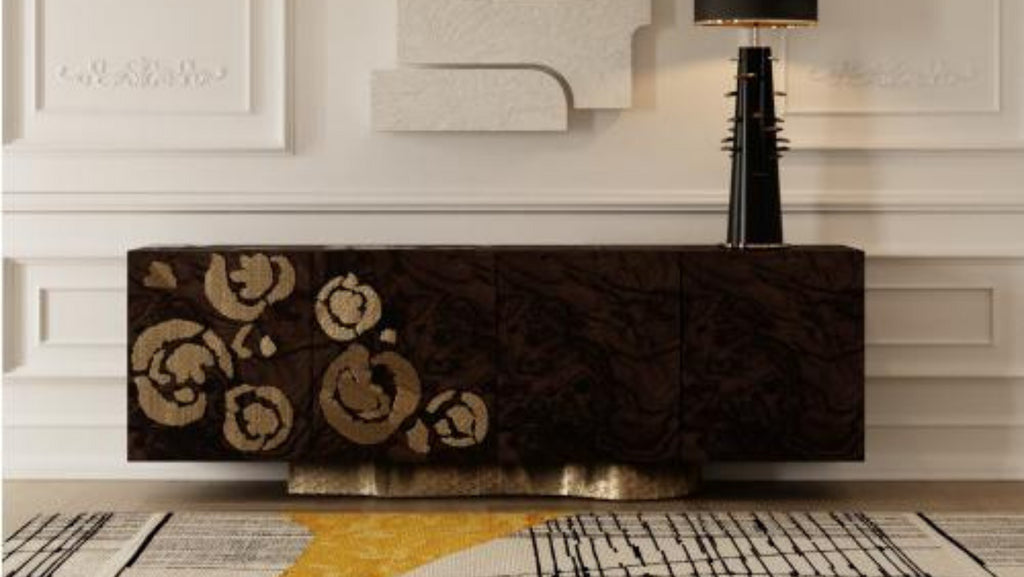History of Sideboard & Wardrobe & Cupboard

History of Sideboard & Wardrobe & Cupboard
Furniture generally refers to any moveable items created to support human comfort or activities like sleeping, eating and sitting. Most historical and modern furniture are products of design, and some people consider them a form of decorative art.
Furniture includes movable items that make a room suitable for human life, like sideboards, chairs, wardrobes, desks, and cupboards. The furniture designs you see today are a part of the experience, influence and styles practised during the beginning of history.
There has been a significant development trend in furniture design since the ancient/classical times (ancient Egyptian & ancient Greek) to what we have today (modern and contemporary).
Most of these furniture styles have survived from down the ages and are still in existence today. While lifestyle greatly influenced some furniture styles in those days, others furnitures were created to keep up with the changing lifestyle.
This article takes us back to the history of sideboards, wardrobes and cupboards. We will find out the distinctive and unique features in these pieces, their purpose, and the factors that influenced these designs.
The History Of Cupboards
Originally, cupboards existed as one or two open-shelved boards in which dishware (plates, saucers and cups) were stored- hence the name cupboard. They featured one or more built-in drawers and often served as a place to store alms (surplus foods) to be distributed to the poor.
Gradually, cupboards were upgraded into freestanding units with enclosed shelving and ventilated doors that would then be referred to as almery or aumbry. Aumbry was more specifically used in reference to a type of cupboard created for valuables. And cupboard was generally used to refer to furniture for storing foods, grocery items, and plates.
Cupboards were further differentiated by the style in which dishware was displayed. Some cupboard versions were made for other kinds of storage, designed with no display but were rather wholly enclosed. These designs were referred to as armoires or wardrobes.
The food storage design that preserved an open display was then developed into other forms of dressers, buffets, and sideboards.
Although these terms have been used interchangeably, they are entirely different, with each item possessing unique features.
Consider the following quick guide:
The term cupboard usually implies a built-in storage unit, strikingly similar to the small partly enclosed alcove. An alcove is connected to a wall or forms a section of a room.
Press- A term used for freestanding cupboards, generally dedicated to storing linen, clothes, and china press.
Armoire- As you might have guessed, armoire originates from the term almery. Its virtual appearance is quite similar to a wardrobe (the modern name for a type of press). Armoire is built with shelves, tills, drawers, and its main and most significant feature is the open interior space, large enough to hang gowns, suits, dresses and coats.
The History Of Sideboards
A sideboard is a type of furniture traditionally used in the dining room to store items, serve foods, or display a variety of dishes. The earliest sideboards were undeniably simple shelves, often positioned closer to the dining table on the wall.
The first versions of sideboards first appeared in the 18th century. With time sideboards found their way into the kitchen, but with an enhanced design that included more shelving and permanent storage spaces like sets of cabinets and drawers that conveniently held food and serving dishes. This version is the inspiration behind the current kitchen cabinetry.
Sideboards surged in popularity in the 19th century when households began to flourish and could now dedicate an entire room to dining. With a basic upgrade, these sideboards featured a range of decorative details with expensive veneers and inlay ornaments.
In the following years, sideboards were highly valued, so much so that they could now be displayed in living rooms, parlours or any other rooms where household items could be displayed. Today antique sideboards are highly sought-after. They are regarded as desirable, unique and fashionable accessories from the 18th and 19th centuries.
People looking to create a traditional theme in their dining room pay high amounts to acquire these old yet finely styled pieces. That's because they provide more than just a classical stylish addition to the room; they bring unmatched functionality to the table as well.
Server furniture, though smaller and more formal in appearance than sideboards, can fall under this category. Originally, credenzas were referred to as servers, but without legs or sliding doors. But today, it's not uncommon to find modern credenzas fitted with legs.
People often use buffets and sideboards interchangeably; that's because they look strikingly similar. However, unlike a sideboard that features short legs or a base that sometimes sits directly on the floor, a buffet tends to feature higher or longer legs.
The History Of Wardrobes
Initially, the wardrobes that provide us with a stylish and practical way to organize our clothes, shoes, and personal items did not exist. The forefathers of wardrobes stored their clothes in chests.
But come the 12th century, and the wealthy elite needed more convenient space to keep their fine robes, clothing and precious accessories.
The first wardrobes existed as a room packed with cupboards and storage lockers. With time, hanging rails were created for kings to hang their robes while ensuring no development of creases.
In the 17th century, oak hanging cupboards ( they were pretty massive and heavy) were largely popular throughout the US. Later they would be exported to Britain.
As time went by, the enormous wardrobe size became much smaller but still provided enough room for the wealthy elite to display their possessions. Later in the Victorian period, full-length doors that covered the entire drawer to its bottom part were created. The doors featured a mirror in their exterior.
Today, these wardrobe designs are still highly preferred but customized to fit the available space in your room. They come with unique features like clothes rails and shelves to help you hang and organize your accessories. They feature numerous colours and finishes, and all you have to do is pick one that strikes your interest.
TAGS:
